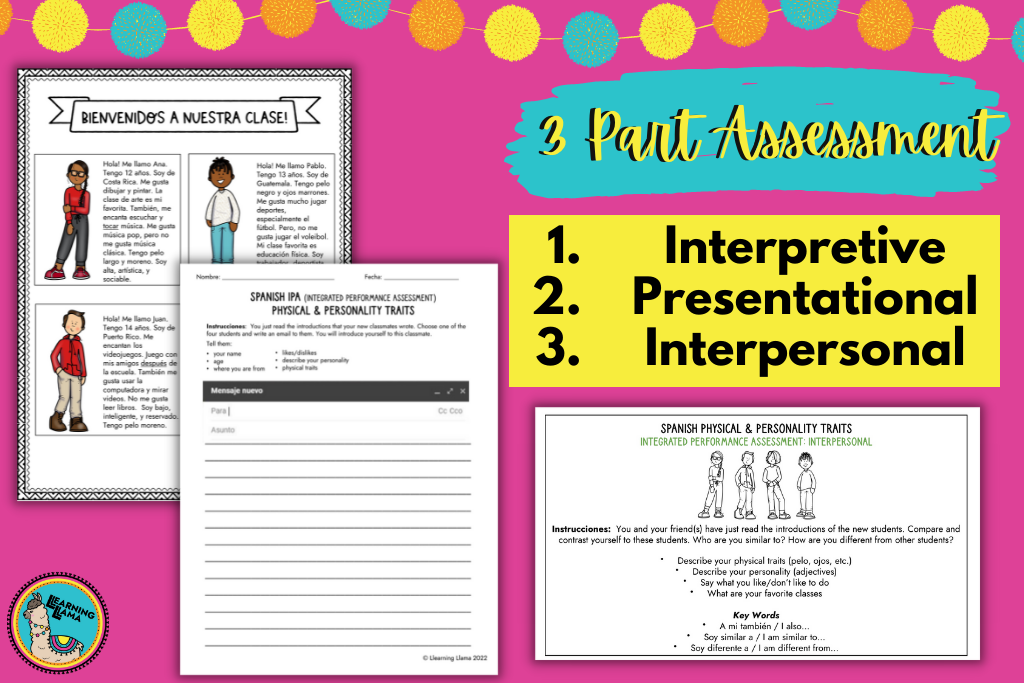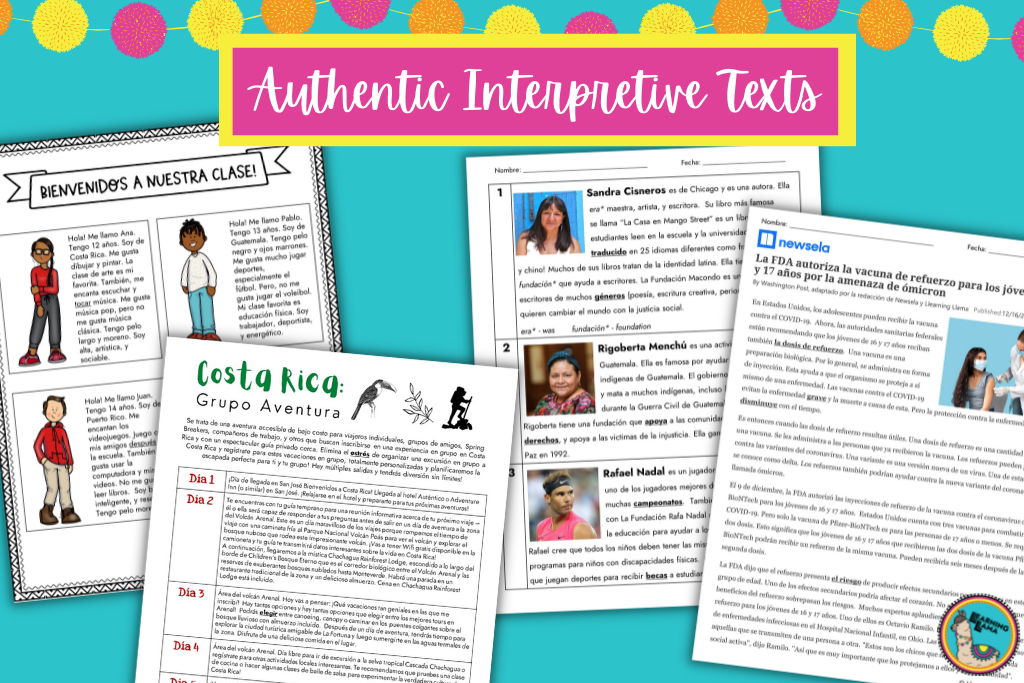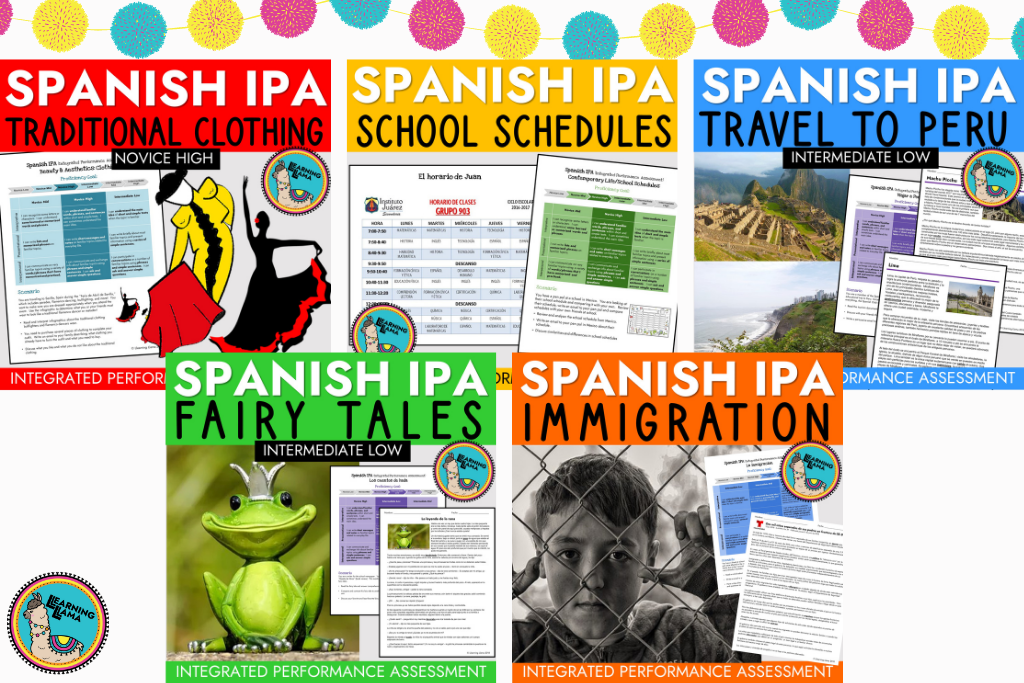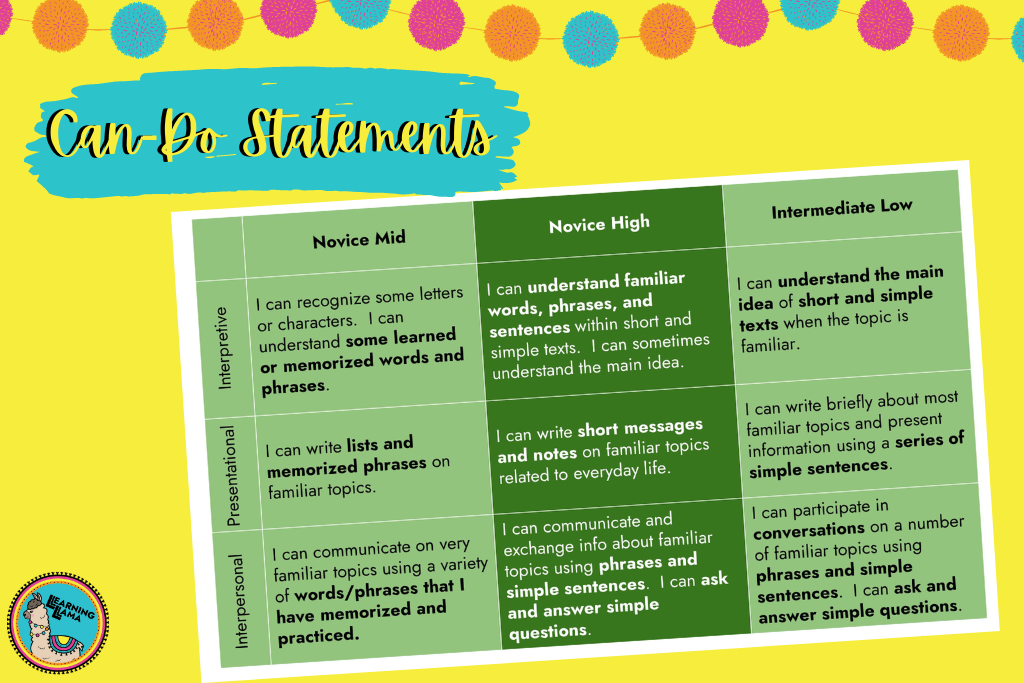In the education field, there are so many abbreviations that our heads are spinning, but IPA is definitely one you want to know and remember. The Integrated Performance Assessment allows teachers to assess language students’ proficiency. They demonstrate practical knowledge and use of all 3 communicative modes in the target language. As most world language classes move away from grammar-focused lessons, and move toward the communicative approach, the Integrated Performance Assessment is the most effective way to assess our students and their abilities based on their proficiency level.
What is an Integrated Performance Assessment?
But what exactly is an “IPA?” It is a three part proficiency-based assessment based on the three modes of communication: interpretive, presentational, and interpersonal. You can dig deeper into each of the modes by clicking on the links to individual blog posts. The IPA combines all three modes into one assessment, making it the perfect way to truly assess our students’ proficiency.

An Integrated Performance Assessment revolves around an authentic scenario and an interpretive text (video, audio, or reading). In part one, the students will interpret the text with comprehension questions. For part two, students complete a presentational writing assignment based on the authentic text. Finally, in part three, students have an interpersonal conversation about the material.
IPA Authentic Scenarios
Let’s take a look at some sample scenarios that IPAs may present:
- You are traveling abroad to a Spanish-speaking country. As you plan your trip, you read these informational guide pamphlets to get some ideas on where to travel.
- A foreign exchange student has come to your school. Since you are studying Spanish, your teacher asked you to show them around school. The new student shows you her school’s website (from Nicaragua) and you discuss the similarities and differences.
- You are preparing for a class debate in economics class about the pros and cons of electric cars. Read the articles about electric cars and form your own opinion.
What you’ll notice in each of these scenarios is that they are more than just “write an essay on your opinion of electric cars” or “complete a venn diagram to compare and contrast two schools.” Each of these scenarios has a realistic element that students could actually see themselves in one day.
Creating an IPA requires finding an authentic text and crafting a real-life scenario around it. I make the IPAs for my classes and include all ACTFL standards, answer keys, and rubrics based on proficiency level.
Three Part Assessment Design
Now, based on the authentic scenario, you need to design 3 communicative tasks. Let’s take the class debate about electric cars as an example.
For the interpretive task, find articles in the target language that outline both the pros and cons. If you need to edit the texts a little to meet your students needs, that is okay, but try to keep it as authentic as possible. Read more here about finding authentic texts.

Next, when designing the presentational task, you want them to write in a “real-world” scenario. Maybe they are writing an email to a teacher, drafting a speech, or even writing a school newspaper article. This will all depend on the prompt and what you think logically fits with the scenario. With this example, I would ask my students to write a speech that they would give to their class, persuading them to agree with their opinion on electric cars. Learn more about designing presentational tasks here.
Finally, we must design the interpersonal task. For the debate example, you can simply have them debate! They will make a lot of the same points in their presentational task, but now they are put on the spot and must speak spontaneously. Or, you could just have them preparing for the debate with their classmates and listen to them discuss the pros and cons. Learn about interpersonal rubrics here!
Integrated Performance Assessment Samples
View the IPAs for various proficiency levels and themes here:
Novice Low
Novice Mid
- Bundle (Buy 5, get 1 Free!)
- La Casa
- Los Pasatiempos / Hobbies
- Benefits of a Pet / Healthy Living
- La Ropa
- El Mercado
- Physical & Personality Traits and Likes/Dislikes
Novice High
- Bundle (Buy 5, get 1 Free!)
- La quinceañera
- Future City (technology)
- Traditional Clothing (Matador/Flamenco)
- Travel Itineraries (Spain & Peru)
- Famous Hispanics
- Global Causes – Donate to a Cause
- Internet Milestones
Intermediate Low
- Bundle (Buy 6, Get 1 Free!)
- Covid-19 Vaccine Debate
- Fairy Tales – La princesa y la rana
- Multicultural Dolls – Beauty & Aesthetics
- Mariachi Bands & Families
- Immigration/Family Separation
- Travel to Peru
- Stolen Online Identity
- Stereotypes
Intermediate Mid/High
- Bundle (Buy 6, Get 1 Free!)
- Running of the Bulls
- Gender Roles
- Dance in Peru & Benefits
- Effects of Technology
- Study Habits
- Covid-19 Vaccine Debate
- Women’s Freedom & Department Stores

How do I proctor and give the IPA?
The entire IPA may take your students a few class periods to complete. This is how I manage the IPA with 90 minute block scheduling:
Day 1:
- Students are introduced to the scenario. I explain their proficiency level guidelines and can-do statements.
- Then, we begin the interpretive portion of the assessment, where they read a text. Students are able to annotate and markup the text anyway they see fit. They will identify main idea, supporting details, and words in context – all in English. (How else will I know if they understood what it was saying?) Depending on your students and the length of the text, this can range from 30-60 minutes.
- At this point, you could begin the presentational part of the assessment. Some teachers recommend that you first go over the text together to ensure that everyone understood the main idea. We wouldn’t want a lack of understanding of the text to interfere with their presentational or interpersonal assessments.
- You can also wait until day 2 to administer the presentational assessment to give them a bit of a break.
Day 2:
- Now students will begin the presentational writing exam.
- As they work on that, I begin working with small groups of students to administer the interpersonal speaking assessment. In my experience I find that working with small groups of 3 students provides for the best conversations. In addition, when students are in a low-pressure environment they are more likely to feel comfortable and to succeed. To achieve this, I like to pull the small groups into the hallway while the remainder works on the writing portion
- If this is not feasible for you, then you may want to add a Day 3 to the administration of the assessment. On this day, you will still pull small groups into a section of the classroom while the rest of the students work on a fun, relaxing activity. After all, they just took a 3 part assessment! For this low-pressure environment to be created, it is important that the rest of the class is not listening in on the small group conversations. So, give the rest of your students a fun activity like a board game to play and to unwind.
Grading an Integrated Performance Assessment
As with any proficiency-based assessment, you are grading on ACTFL can-do statements. You want to have rubrics that align with the students’ proficiency levels. If they are at a Novice High level, you will need three Novice High rubrics, one for each of the three communicative skills. I recommend putting categories on the rubric that show the Novice Mid and Intermediate Low can-do statements, too. This will show students where they are still struggling or where they exceed expectations.

And with that you have a 3 part assessment, measuring all 3 modes of communication. So, the answer is YES! You should be using the Integrated Performance Assessment in your class as a summative assessment. There is no better way to test our students’ abilities and proficiency than to use the language in an applicable way.





